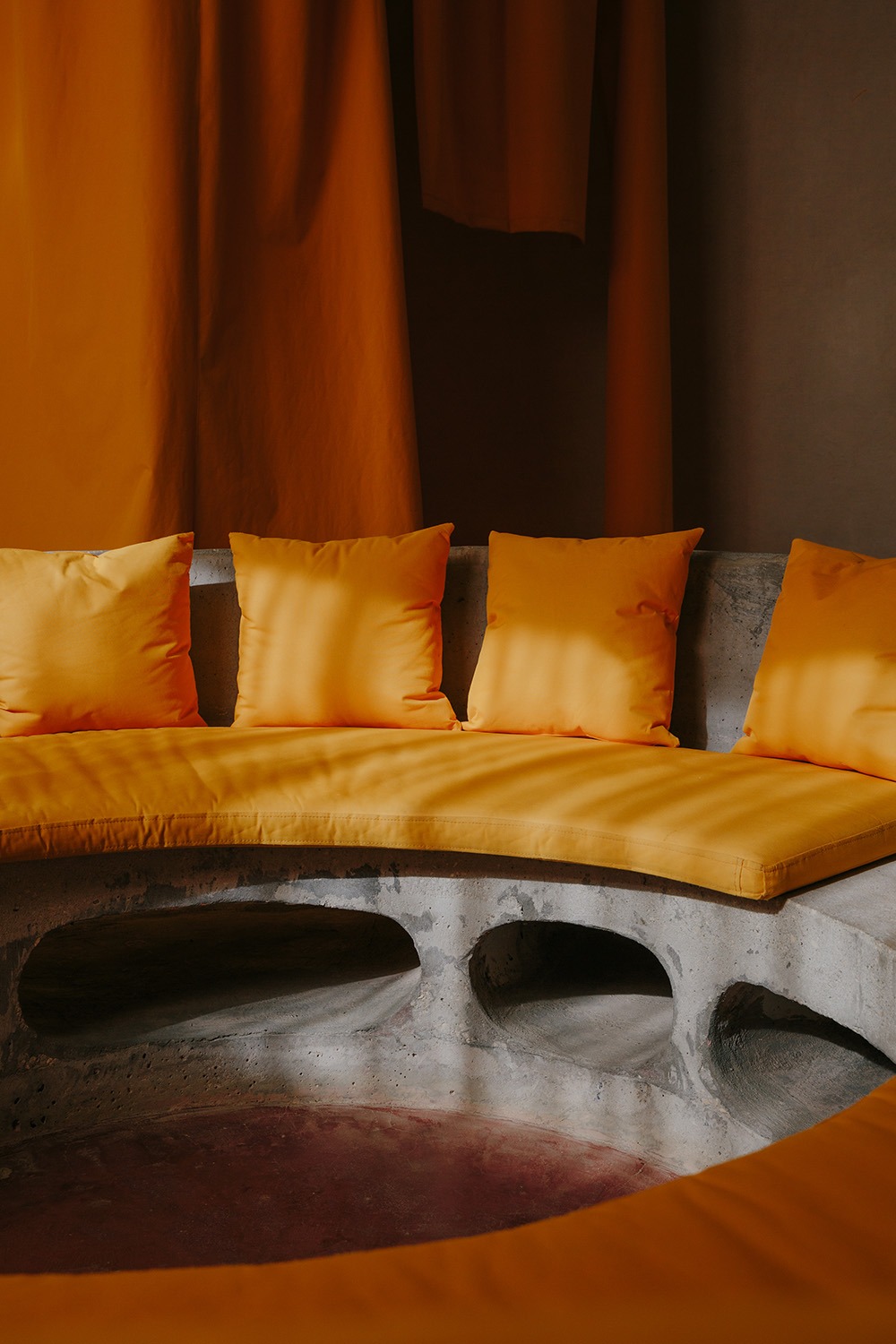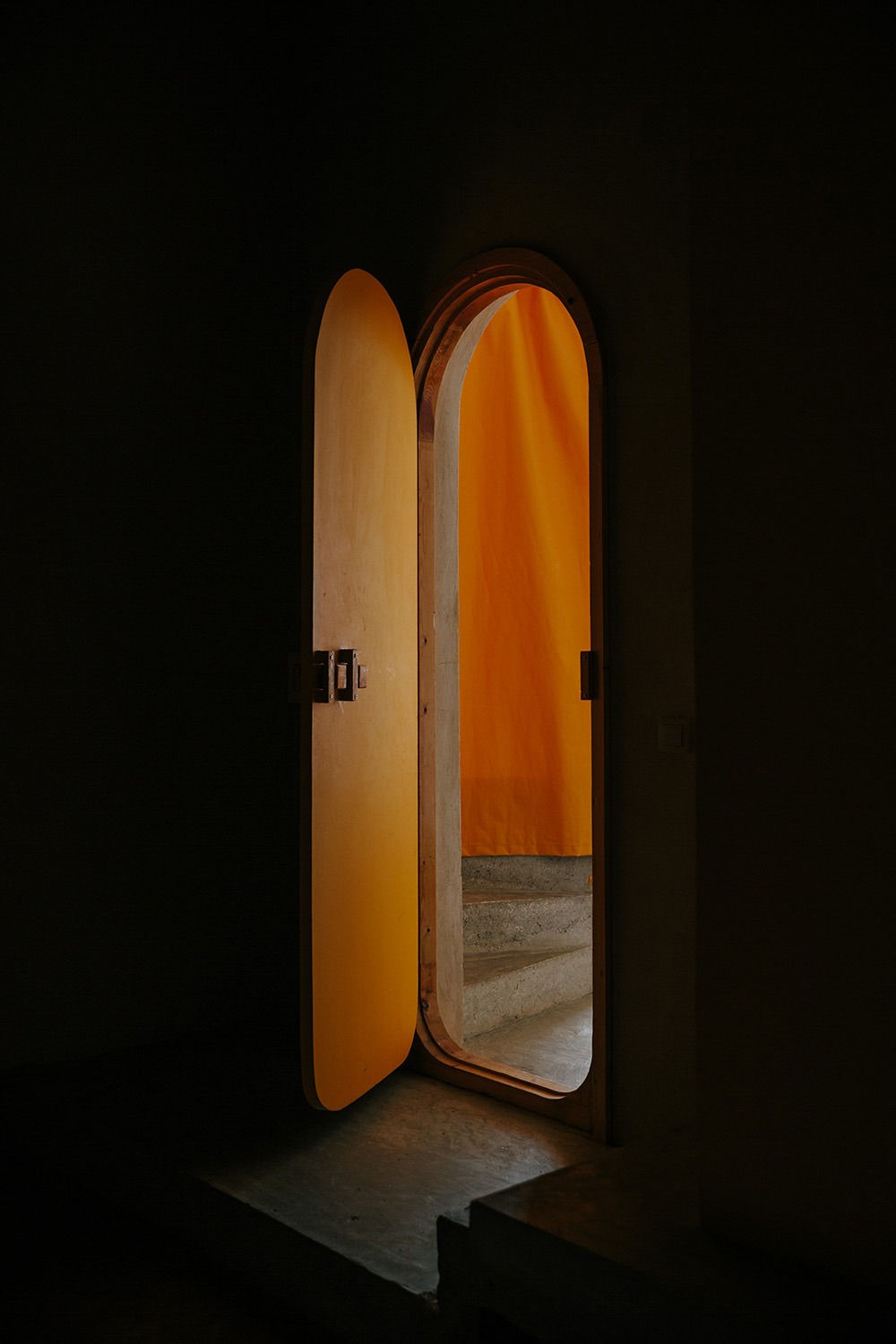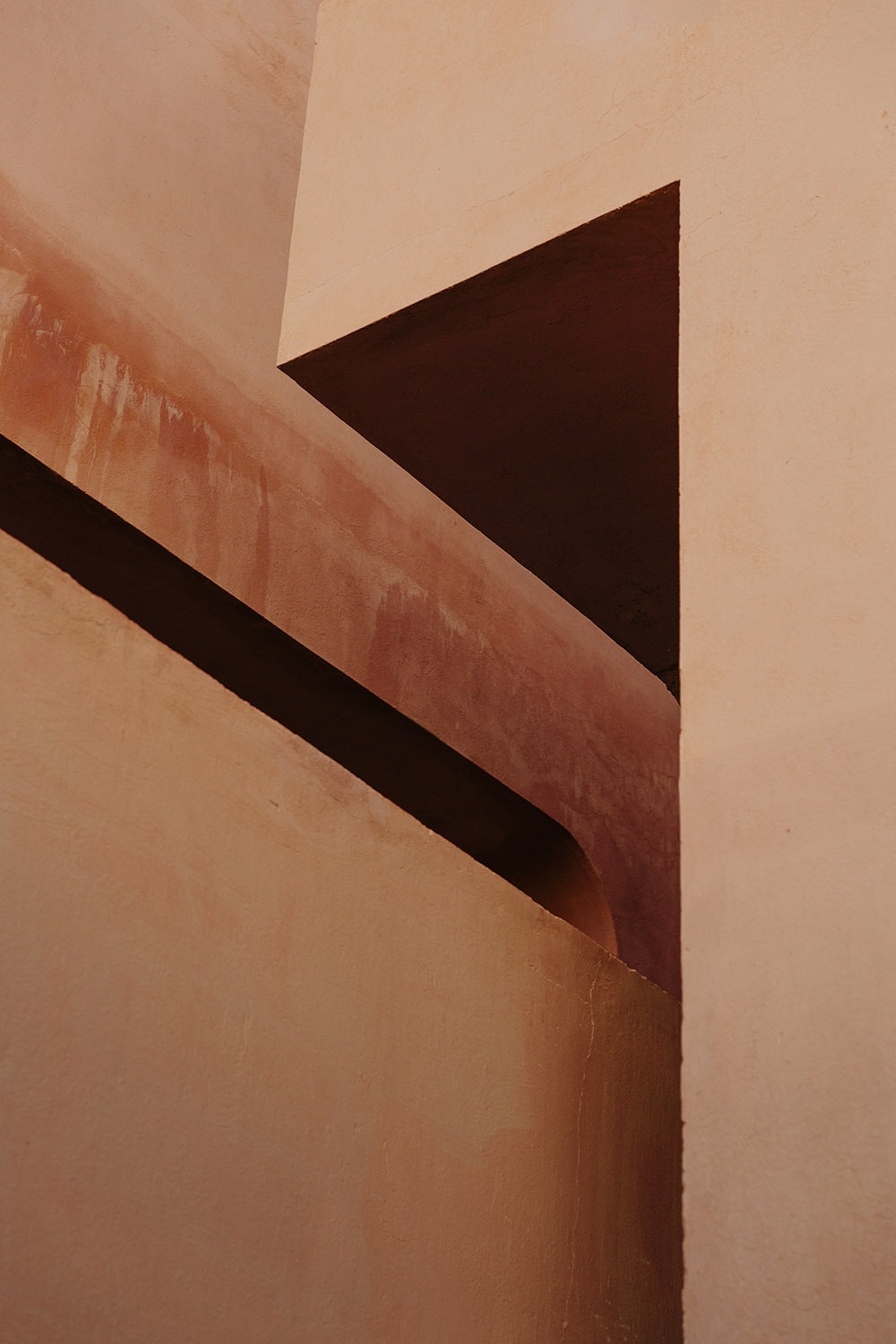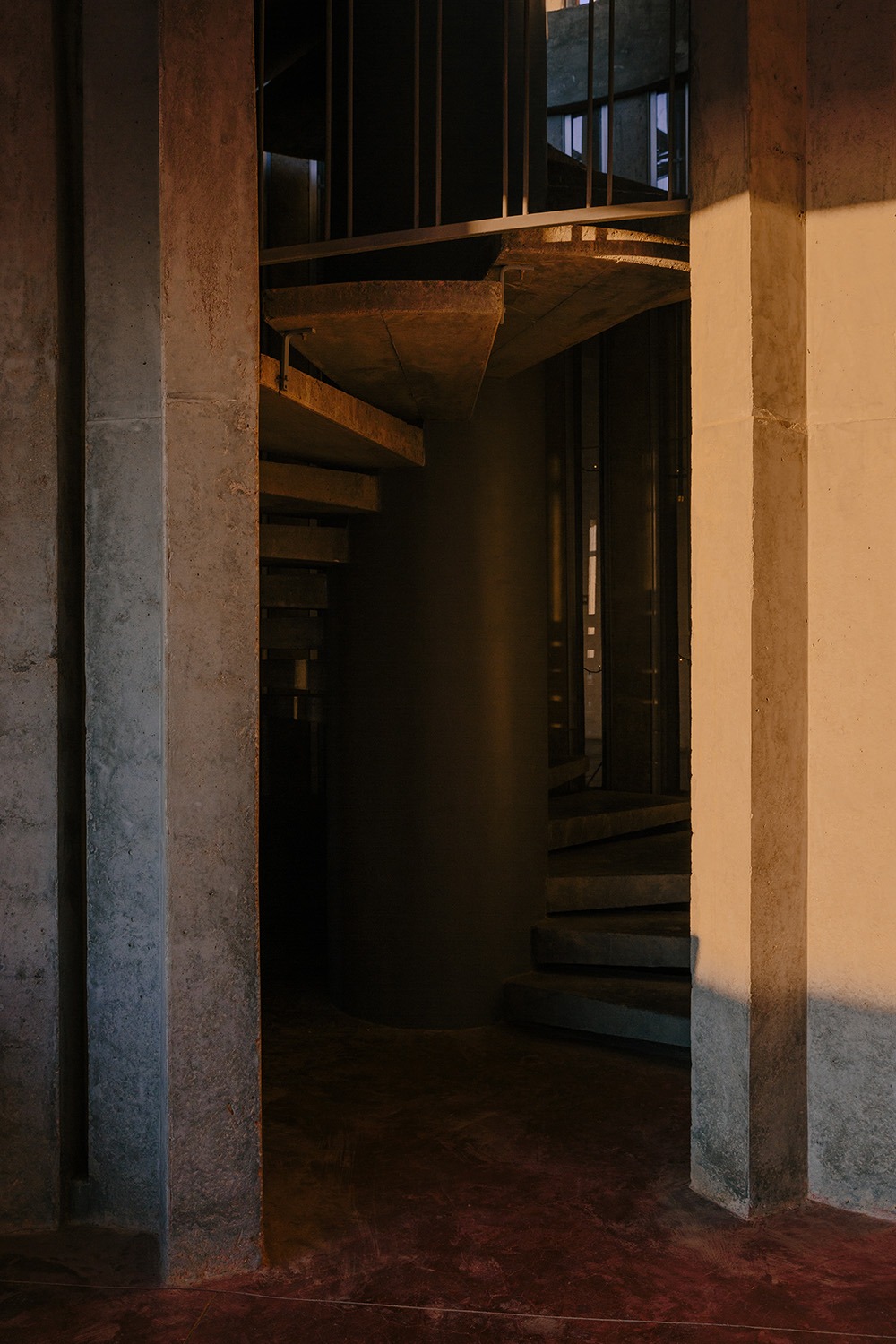As the Tunisian sun baths ochre-hued terrace with flares of sunlight, in stunning contrast to the subtle gold of the dunes in the distance, you fall into a meditative trance. This is a fleeting moment you know will never repeat itself. Not until dusk, when the same scarlet sun will dip behind Nefta’s palm grove, and the sky will glow magenta, for one final show. Out here, DAR HI, darkened and silent, becomes the ultimate site for respite; a place where eyes and hearts soar gently.

“Would you like a top-up?” asks the waiter. I’m sitting in the early afternoon sun on the spacious terrace of DAR HI in Nefta, examining its panorama in silence. The palms of the sunken desert oasis below me look like a patchwork of semi precious-stones. Behind them, in the distance, the large saline lake Chott El Jerid forces contemplation; further south, several miles of dunes are visible on the horizon—each competing for my attention. As the waiter fills up my wine glass, I turn to study the mesh of houses to my left—catching flashes of Nefta’s residents happily orbiting its narrow brick-patterned streets.


“Enjoy the view,” he says, leaving me to the multiplicity of worlds contained within it. An oasis town at the door of the Great Erg Oriental in southern Tunisia, Nefta is home to 21,000 people. A half-built sort of place with crumbling buildings, the town has an ancient and sacred feel to it. Considered the spiritual home of Sufism, a mystical branch of Sunni Islam, it prides itself on its mosques and hot-springs-fed oasis with over 300,000 date palms—a local gem and leafy inner city respite.

At the frontier of the Sahara, in a still rugged landscape, this is hardly the setting in which you would expect to find a design eco-lodge. When I arrived earlier that morning, it was a relief to see DAR HI’s wooden door materialize out of the haze of Nefta. Behind me was a long journey on dusty roads where children play and cars drive by; ahead a space filled with tranquillity—my spirits began to rise. Conceived of in 2005, DAR HI is the success story of an ambitious experiment by French owners and creative entrepreneurs Patrick Elouarghi and Philippe Chapelet: creating an innovative eco-retreat that would add an effervescent quality to this somewhat underrated region.



Entering the place feels like stepping into a private house with different zones devoted to different activities—a dining area, a library, an auditorium, a reading nook, and a self-serve refreshment alcove. As I inch my way through the ample communal space, so much of the place feels like a sly surprise. Combining a Bauhaus aesthetic with a Californian 1960s Modernism and a Tunisian riad, DAR HI is a lot to take in. Designed by French industrial designer Matali Crasset, the architecture and interiors are emblematic of her ethos: functional and industrial, yet playful with a certain smudginess. Bold colours, graphic tiles and bright textiles meet simple concrete columns, palm furniture and traditional pendant lamps—all jostling for my attention.



Here, on the large communal terrace, the scenery doesn’t change—DAR HI is just as much a place to admire from outside. Its architecture is unique—undeniably Tunisian but with a twist of modernity. Structured on pillars and enclosed by a wall, from afar, the compound looks like a mirage citadel emerged from the sand. Its peachy toned walls and the collision of modern and indigenous aesthetics feel especially homey. As I wait for my room, wine in hand, I stroll around the complex breathing in the air. There are little discoveries everywhere begging for my inquisitive eye: intriguing Arab-inspired architectural elements, charming hide-outs, and furniture designs that Crasset has created in collaboration with local craftspeople—all distinct in style, but consistent in spirit. Nothing grabs my eyes like the infinity swimming-pool, replenished with warm springwater and designed with ecological conscience. “The retreat is fully green and self-sufficient”, I was told at check-in. Conceived with notions of well-being and built with little-to-no impact on the land, DAR HI is a soulful meditation on community and co-existence.


“Your room is ready, sir,” calls the receptionist. DAR HI has 18 understated yet tastefully designed rooms, scattered across concrete terraces with miniature canals in the style of Moorish gardens. Of the three different typologies, mine is a ‘Pilotis Room’; elevated on concrete pillars, furnished with simple red pine furniture, and with expansive views of the oasis—the others include the ‘Troglodytes Rooms’, inspired by the Matmata cave houses, and the ‘Dunes Rooms’, multi-bedroom open spaces with desert designs. My room is not luxurious, but the simplicity itself is blissful. One moment in and I find myself pressed up against the windows like a kid in a skyscraper, imagining and watching. For a moment, it seems inconceivable that the Sahara can be so close. As I read a book on the orange daybed of the lounge area—an alcove boudoir veiled in glass and suspended in a vacuum—a certain type of isolation sinks in; this, I realise, is the ultimate retreat.

DAR HI holds quietude in high regard; there are no distractions and very little noise—the tranquillity is broken only occasionally, when the mu’azzin wails the call to prayer. Kicking back in silence with a tea on the pool deck, I have the feeling that all guests have done the same thing since arriving here—very little. Here, hours seem to gently merge into one another: wake up, enjoy a meal, crash into a nap, repeat. Towards the end of the day, I treat myself to a massage and a visit to the traditional hammam, heated with steamed hot water from the desert. Its walls are covered in turquoise and green tiles, while sinks are made of foussana marble. By now, the hotel has become synonymous with rejuvenation. Refreshed, I slip back on the terrace and watch Nefta transform from ochre to pink and violet, and then entirely to black.


Dinnertime is another feast for the senses—table d’hôte style and served with a smile. DAR HI is not concerned with fine dining; the focus is on simple sophistication and devotion to local culinary traditions. Recipes are quintessentially Tunisian, slightly twisted by the Parisian culinary consultant Frédérick E. Grasser Hermé, and ingredients are locally sourced or grown on the property. As I sit at my table nibbling on warm breads with a bell of butter, my gaze lingers on the open kitchen, where local women are preparing simple, unpretentious dishes. A flavoursome pumpkin soup arrives, followed by brik à l’oeuf and a generous portion of couscous with chicken and stew-like vegetables. Prized local wine adds to the experience while dates and a refreshing pomegranate dessert complement the meal. Following the path back to my room, the stars are out; sunshine has given way to gusts of cold wind. As Nefta gets lost to the blackness of night, I leave my mind wandering; time taking its own pace.


At sunrise, light floods the room. Wrapped in my blanket, I look out as the rising sun burns off the fog that has enveloped the lodge during the night. I head to the pool for a wake-up swim before breakfast. Lounging on the cotton-covered sunbed, I think of how this region has been a great place to bliss out, but DAR HI, I realize, is something more: the ultimate experience of withdrawal. Suddenly, I feel an overwhelming urge to cancel my flight home.

_____________
A 15-minute ride from the International Airport of Tozeur-Nefta, full of charm and peace, DAR HI is an excellent base from which to explore Southern Tunisia. From the Chott el Jerid, to the nearby town of Tozeur, to the many Star Wars locations and the desert, experiences await. Reservations can be made on darhilife.com




